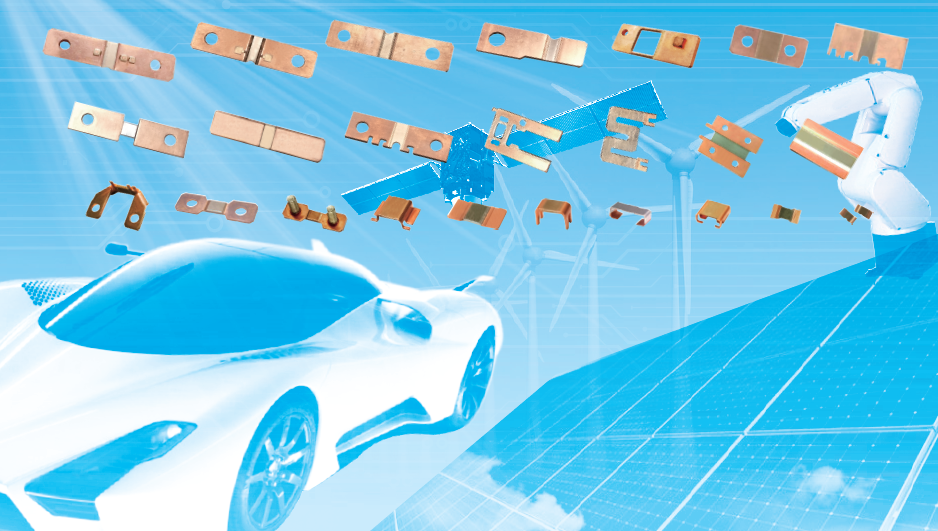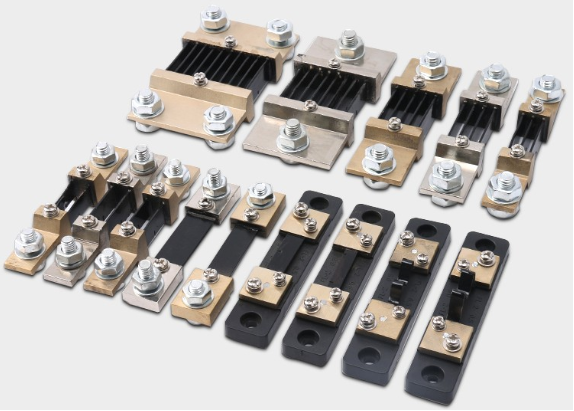Position:Home » Technical Articles
Why shunt resistors for current sense applications?
Writer:Microhm Page View:Date:2020-01-22
Today, almost all the control and monitoring circuit uses shunt-based current measurements to replace sensors. To make these measurements accurately, it is useful to understand how shunts work. Microhm Electronics shunt resistors are widely ultilized in precison current sense applications.

A shunt is a low-value resistor used to measure current – it is therefore also referred to as a current-sense resistor. The shunt typically connects in series so it carries the current of interest. A voltage measurement device then connects in parallel with the shunt. The current through the shunt generates a voltage drop that is measured. The current value is derived from Ohm’s law and the known resistance (I = V/R). To keep power loss – and thus heat development – to a minimum, shunts must have resistive values no higher than the milliohm range. Microhm Electronics' shunt resistors from size 0603 to 8420, the resistance value are close to 1 mohm.
The advantage of this measuring method is that it allows the quick detection and elimination of faults. Shunts are therefore particularly interesting for safety-relevant applications where faults must be detected. Furthermore, shunts deliver precise measurements and thus enable the efficient control of drives or the monitoring of battery management systems. And shunt resistors are an excellent value for money. Four-termial MVR series from Microhm are popular in precision current sense applications.

Shunts are basically suitable for any type of measuring application – be it direct or alternating current. Shunts, such as MMS8420 and FL-2 series, are currently experiencing a boom, especially thanks to the rising number of condition measurements in vehicles — engine and battery management, airbag control units, ABS, infotainment systems, and so forth. Current-sense resistors are also becoming ever more widely used in industrial applications, medical technology, for regenerative energies, and for smart metering.

A shunt is a low-value resistor used to measure current – it is therefore also referred to as a current-sense resistor. The shunt typically connects in series so it carries the current of interest. A voltage measurement device then connects in parallel with the shunt. The current through the shunt generates a voltage drop that is measured. The current value is derived from Ohm’s law and the known resistance (I = V/R). To keep power loss – and thus heat development – to a minimum, shunts must have resistive values no higher than the milliohm range. Microhm Electronics' shunt resistors from size 0603 to 8420, the resistance value are close to 1 mohm.
The advantage of this measuring method is that it allows the quick detection and elimination of faults. Shunts are therefore particularly interesting for safety-relevant applications where faults must be detected. Furthermore, shunts deliver precise measurements and thus enable the efficient control of drives or the monitoring of battery management systems. And shunt resistors are an excellent value for money. Four-termial MVR series from Microhm are popular in precision current sense applications.

Shunts are basically suitable for any type of measuring application – be it direct or alternating current. Shunts, such as MMS8420 and FL-2 series, are currently experiencing a boom, especially thanks to the rising number of condition measurements in vehicles — engine and battery management, airbag control units, ABS, infotainment systems, and so forth. Current-sense resistors are also becoming ever more widely used in industrial applications, medical technology, for regenerative energies, and for smart metering.
Latest News
- Resistor's role in measuring and correcting LED,,,
- Single through-hole resistors' characteristics ,,,
- Why shunt resistors for current sense applicati,,,
- Metal-film resistors with small size, high resi,,,
- 36W High-Current Shunt Resistors MMS8420,,,
- 1W Surface Mount Resistor MPR1206,,,
- An Overview of Microhm Electronics' Resistor Pr,,,
- More anti-sulfur resistors used in harsh envir,,,
- Resistance changes with temperature,,,
- 140W TO247 High Power Heatsinkable Resistor,,,
- MMS5930 is ideal for current sensing in industr,,,
- Shunt resistors selection for engineers' design,,,
- Considerations for choosing precision resistors,,,
- Ceramic Encased Cement Resistors NWH Series for,,,
- Resistors for Passive Balancing in Battery-Pow,,,
Hot Articles
- Microhm will take part in 10th Automotive World,,,
- Thanks for Visiting Microhm's Booth E5-5706 in ,,,
- Resistors in Short Supply: Blame Cars,,,
- New lunch: High Power Precision Shunt Resistor,,,,
- How to Test a Resistor,,,
- Innovative Technology, Future Electric: Electri,,,
- What is Precision Resistors?,,,
- SMD Resistors Sizes and Packages,,,
- The Construction and Features of Metal Film Res,,,
- What is a TO-220 Resisor?,,,
- Hot Selling Products: Precision Shunt Resistors,,,
- How to Calculate the Equivalent Resistance Valu,,,
- What is a Fixed Resistor?,,,
- Resistors in LED Circuits,,,
- Resistors Types and Materials Overview,,,
Resistance applications
- Precision Resistors' Construction and TCR,,,
- Heater Blower Motor Resistor in Air Conditioner,,,
- Shunt Resistor MMS8420 for High Current Stable ,,,
- Urbanization Development Bringing the Transform,,,
- The Four Important Functions of Alloy Resistors,,,
- BMS for New Energy Vehicle,,,
- The Main Application for High Precision and Low,,,
- Carbon Film Resistors' Features and Application,,,
- The Measurement Accuracy of Automotive Shunt is,,,
- Industrial Roberts Applied to Solar Photovoltai,,,
- Surface Mount Resistor's Size and Package ,,,
- Select the Right Resistor for Harmonic Filterin,,,
- Difference Between High Precision Resistors and,,,
- Why Zero-Ohm Resistors?,,,
- Miniature future for passive electronic compone,,,
